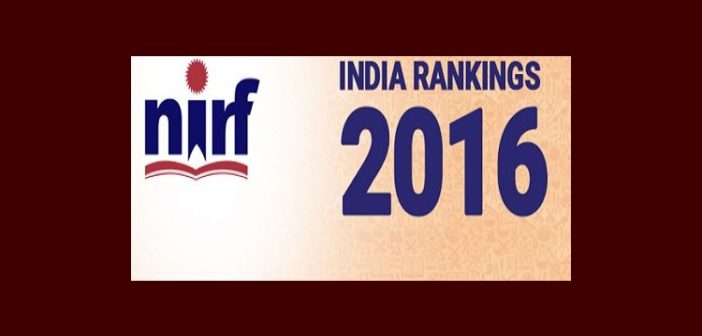The National Institutional Ranking Framework, (NIRF), an initiative of the Union HRD ministry to grade some 3,500 higher education institutes in India based on various performance parameters has led to some unpleasant surprises certain well-known institutes that found themselves ranked way far down in the list or omitted all together.
Thus, while a globally reputed Business school like XLRI was ranked 13, Delhi University’s Faculty of Management Studies (FMS) did not figure at all in the rankings released on April 13, 2016.
According to Sunil Verghese, chief brand and sustainability officer of XLRI, most of the highly ranked B-schools are either IIMs or others aided by the ministry. Centrally sponsored B-schools have different operating models than private ones. Private B-schools have umpteen limitations.
Similarly, IIM-Ranchi, ranked 28 among management Institutes, may have lost out on the infrastructure front, in not yet having a permanent campus, after six years of existence. It is functioning from Suchana Bhavan, a state government building that also houses the information and public relations department.
IIM-R students also claim to have top draw exposure at the Institute with excellent internal and external faculty members and several opportunities of interactions with Industry captains. The students have also excelled in contests like Deloitte Maverick, Axis Moves and Mahindra War Room.
Meanwhile, management education experts were of the opinion that NIRF, despite being a good idea, was poorly executed leading to misleading results, especially since several B-Schools tend to inflate their data on placements, resources and academic achievements.
The NIRF rankings were stated to be based on five broad parameters – Teaching, Learning and Resources; Research, Consulting and Collaborative Performance; Graduation Outcome; Outreach and Inclusivity; and Perception. Under these, around 22 factors were measured.
Some of the prominent sub-parameters were placement, higher studies and entrepreneurship, faculty student ratio, faculty qualifications and experience, library and laboratory facilities, peer-reviewed publications, citations, outreach and diversity.
The Perception parameter took into account the views of academic institution heads, recruiters, members of funding agencies in government and NGOs.
According to NIRF, the data used in the rankings were submitted by the participating institutes and any failure by them to provide the relevant data could affect the rankings.
Meanwhile, Rajan Saxena, Vice-Chancellor, Narsee Monjee Institute of Management Studies (NMIMS) deemed university, felt that the rankings should have been done by an independent agency and not the government.
All the top ranks went to government institutes and it looked more like a promotional activity for such institutes. NMIMS was ranked 72 in the list.
Bakul Dholakia, Director General of International Management Institute, New Delhi, however, found the NIRF rankings to be an unbiased, fair, and transparent rankings mechanism. IMI, ranked 7, was the only private institute in the top ten.
While NIRF claimed to have sifted through data submitted by more than 3,600 higher educational institutions in India classified in six categories and further divided into nearly 20 sub criteria, several prominent names were missing.
Explaining the lapses, Ashok Thakur, former Secretary in Department of Higher education said it was the first year that the ranking was carried out and it is possible that many institutions, including some very good ones could not participate or upload complete information.
ALSO READ: How To Achieve Career Goals After An MBA
Professor Surendra Prasad, who was in the core committee involved in devising the ranking framework, said only those institutions, which registered with it for ranking were taken up and allowed to submit the data.
Yet others like Karthick Sridhar, vice chairman, Indian Centre for Academic Rankings and Excellence Pvt Ltd, said NIRF could have reached out to institutions by conducting workshops at regional levels, addressing queries, setting up a dedicated phone and email assistance service and engaging more closely with stakeholders.
The data requirements like information for the last three years was way too demanding. No one agency took complete charge and thus while many well-known institutions ignored the rankings not-so-well-known institutions got included in the list.
Then again some of the Management institutions like FMS were also clubbed with their parent university. In the rankings, it was considered as one of the faculties of University of Delhi.




